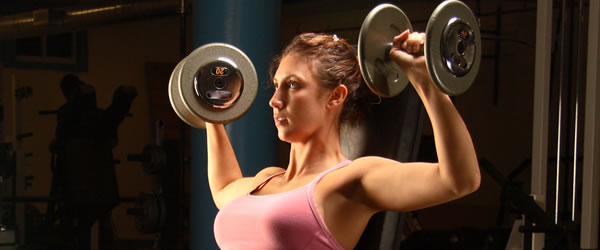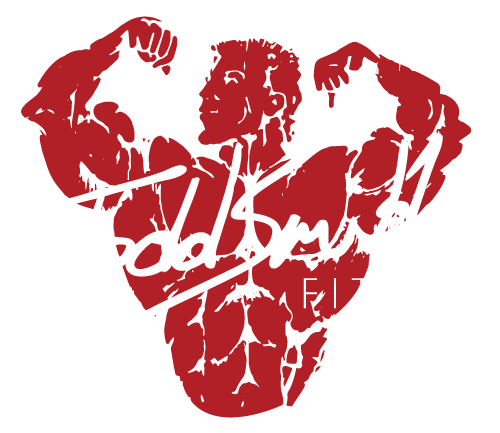It is possible to lose weight without exercise. But, with no exercise at all it will cause fat and muscle to be shed at a 1 to 1 ratio; thus, for each pound of fat lost, a pound of muscle is lost as well. Though someone’s weight may significantly drop, the percentage of body fat will not change. This means no lean muscle mass will be gained and it will actually slow down the metabolic rate of your body.
All forms of exercise burns calories. The goal of exercise when dieting is to burn more calories than consumed in order to get rid of body fat. As explained earlier, the two different types of exercise are aerobic and weight training. Both serve as fat burners but the body adapts to these exercises in a different manner.
It is important for me to stress the fact that I am a huge advocate of weight training vs. aerobic, but both work hand in hand when trying to lose weight. One thing to recognize about aerobic training is that when you add it to a strict diet of severe calorie reduction, cardiovascular conditioning will help you lose more body weight, but will do nothing to help you preserve your lean muscle mass. Therefore, it is the same as not exercising at all because you will lose muscle mass and ruin your metabolic rate.
Yet, when you add weight training exercises to a diet in caloric reduction the body holds onto 80% of muscle mass. Training with weights saves muscles which keeps the metabolic rate elevated and creates an environment for a greater percentage of body fat to be lost instead of muscle. In this case, the body will hold onto muscle tissue making this way of dieting and exercising far more superior than the others.
If you weight train and do cardiovascular conditioning you will increase your metabolic rate and burn more calories and fat. The outcome of fat loss is remarkable in this case. Thus, the main form or exercise should be weight training with aerobics as a second choice. For most, a combination of weights and aerobics may be helpful in accelerating fat loss. After you reach your goal weight, a very lean body can be achieved with no cardiovascular training as long as you keep up your weight training and diet plan.
The Right Kind of Aerobic Training
There is always confusion to what kind of aerobic exercise is better. I always go by this rule: The higher the heart rate, the higher the intensity – the lower the heart rate, the lower the intensity. Thus, working at higher intensity will help you burn more calories than working at lower intensity.
The intensity of cardiovascular conditioning is an important factor in determining how lean you can become. Working at a higher intensity can burn more total calories than lower intensity aerobics. Although, lower intensity may burn a greater percentage of fat, higher intensity is more effective because it burns more total calories and more fat calories.
The best way to keep a cardiovascular workout high for long periods of time (30-45 minutes) is to do interval training. Interval training is training that requires the individual to work as hard as possible for three minutes followed by two minutes of an easier cycle. The goal is to elevate the heart rate in order to get a far better caloric burn. When you bring heart rate back down by two minute steady work you are setting your heart rate down in order to spike back up again, which will elevate the heart rate and continue the caloric burn.
Example of a 35 Minute Fat Burning Interval:
| TIME INTERVAL | HEART RATE | Heart Beats in 10 seconds for 20/30/40 year old |
| 2 minutes 3 minutes | 55% 80% | 18/17/16 27/25/24 |
| 2 minutes 3 minutes | 55% 80% | Let HR fall to 55% 27/25/24 |
| 2 minutes 3 minutes | 55% 80% | Let HR fall to 55% 27/25/24 |
| 2 minutes 3 minutes | 55% 80% | HR to 55-60% 27/25/24 |
| 2 minutes 3 minutes | 55% 80% | HR will stay elevated 27/25/24 |
| 2 minutes 3 minutes | 55% 80% | Slow things down 27/25/24 |
| 2 minutes 3 minutes | 55% 80% | Slow things down 27/25/24 |
Heart Rate Table Index:
| AGE | 60% | 70% | 80% |
| 20 | 120 | 140 | 150 |
| 25 | 117 | 137 | 146 |
| 30 | 114 | 133 | 142 |
| 35 | 111 | 130 | 139 |
| 40 | 108 | 126 | 135 |
| 45 | 105 | 123 | 131 |
| 50 | 102 | 119 | 128 |
In order to reap the rewards of an aerobic exercise, an individual should engage in high intensity cardiovascular training three times a week only after you have established a weight training plan. You should start at lower levels of intensity training and work your way up to 75% of your heart rate with interval training. Do not go over board with cardiovascular training! More than four to five sessions of aerobic training per week will compromise your ability to build and maintain muscle mass.
When to do Cardiovascular Training
The best time to engage in cardiovascular training is in the morning on an empty stomach. Because of the levels of hormones in your body at this time of the day, glucose levels are flat and insulin is absent so fatty acids become line of fuel. Another hormone that will be released at this time is epinephrine which is a part of the “flight or fight” fuel. The higher the intensity of your cardiovascular training, the greater the release of epinephrine and through a multi-step process it will release catecholamines which will attach themselves to fat cells to help break down body fat.
If you can not perform cardiovascular conditioning in the morning, try to avoid carbohydrates completely after an aerobic workout. If you skip the carbohydrates at this time, it will favor the release of glucagon/catacholamines in order to keep your insulin levels low and allowing stored body fat to become the immediate source of fuel.





